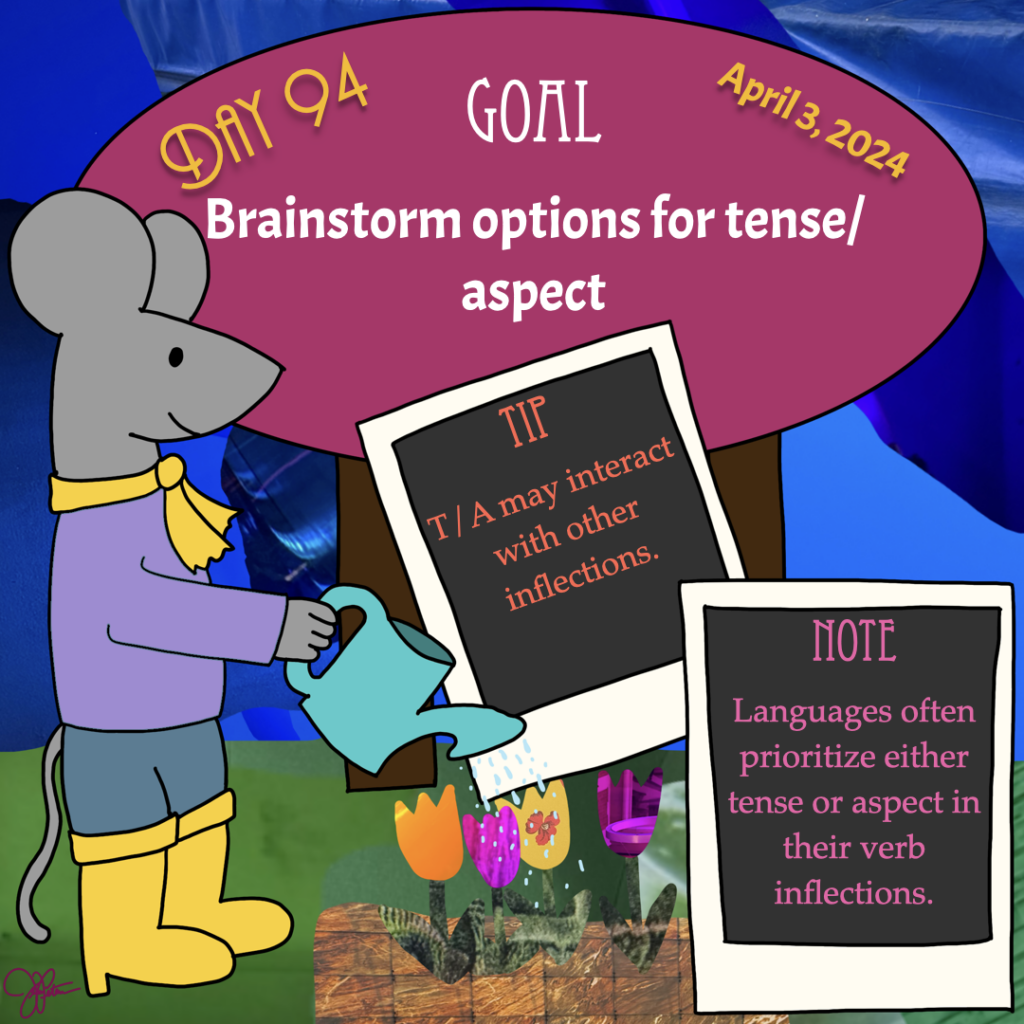
Goal: Brainstorm options for tense/aspect
Note: Languages often prioritize either tense or aspect in their verb inflections.
Tip: T/A may interact with other inflections.
Work focus: Learn/Brainstorm/Try
Specifically, today’s brainstorming session is about tense and/or aspect. While you can end up having ways to express both in your language, languages often prioritize either tense or aspect in their inflectional system for their verbs. Tense inflections indicate when a verb occurred (e.g. past, present, future) while aspect is more concerned with a verb’s spread over time (e.g. perfective indicates the verb’s event is complete, imperfective does not limit a verb’s event to indicate a finishing point, prospective indicates the verb’s event has yet to begin).
Whichever system you choose to prioritize, I encourage you to start small (two or three T/A inflections) and then build from that foundation if you want to expand your system, making sure that any expansions are carefully considered and make sense for your language as a whole.
If your language is more fusional, any T/A inflections you end up creating in your language may come into contact with and phonologically reduce with other inflections, such as index markers. This is especially true if both are affixes that occur on the same side of the verb base (e.g. both are prefixes or both are suffixes). That’s one reason I’m not asking you to create any forms quite yet as you consider some options for inflecting verbs—instead, considering the inflectional system as a whole before assigning forms can help you decide if and how inflections should overlap.
Finally, it is always an option to not mark grammatical information. You may choose to not have any inflections that indicate T/A. In that case, speakers can use serial verb constructions, adverbs, and adjuncts (e.g. adposition phrases) to indicate relevant information if they need to specify the same kinds of information that T/A do.
